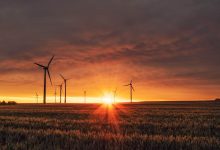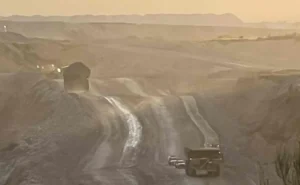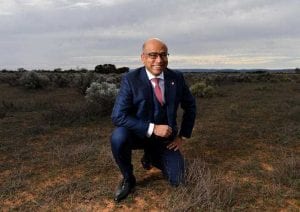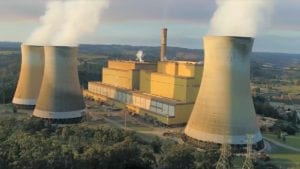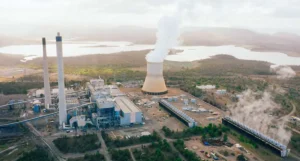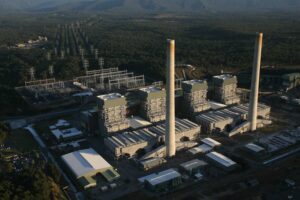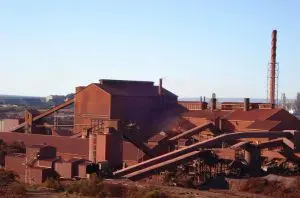Western Australia energy minister Bill Johnston reckons he’s the lucky one. “The good news is that Western Australia doesn’t much care what happens in the NEM (National Electricity Market) … or in the east. We just make our own decisions and get on with it.
The fact that Johnston’s state is not bound up by the labyrinthian regulatory layers that have tied down the clean energy transition in Australia’s national grid must be a source of great envy for his state colleagues. Their plans to set their own pace in the switch to renewables and storage have been repeatedly thwarted by a lack of vision at the national level, and a corresponding lack of haste from key regulatory bodies.
Four state and territory energy ministers – WA’s Johnston, South Australia’s Dan van Holst Pellekaan, Victoria’s Lily D’Ambrosio and the ACT’s Shane Rattenbury gave presentations and took part in a panel discussion – a sort of a mini COAG energy minister’s meeting without the federal minister Angus Taylor – at Wednesday’s Stimulus Summit to discuss their respective plans and visions for a clean energy future, and their frustrations.
What was abundantly clear was that their individual and combined ambition – and this from a tri-partisan mix of Liberal, Labor and Greens ministers – is that the states and territories are so far ahead of the federal Coalition government on climate and energy, it is almost as though they are in a different industrial era.
South Australia’s van Holst Pellekaan wants to fast track his state’s target of “net 100 per cent” renewables to be reached “by” 2030, rather than “in” the 2030s. That shouldn’t be much of a problem, given the Australian Energy Market Operator reckons the state will be at 87 per cent within four years.
Victoria’s D’Ambrosio has a legislated target of 50 per cent renewables by 2030, and will have to reach 100 per cent renewables well before 2050 if she isn’t to break the climate law she designed and legislated for the state to reach zero emissions by that date.
The ACT’s Rattenbury has already reached the territory’s target of delivering the equivalent of 100 per cent renewables through a series of contracts with wind and solar farms in S.A., Victoria, NSW and the ACT, and is now plotting more such contracts to ensure that the electrification of transport and buildings (heat and gas) can follow a similar path. The results of a new 200MW renewable energy tender plus storage are before cabinet and should be announced soon.
WA’s Johnston baulks at setting a defined renewables target, but says he has no doubt that there will be no new thermal generation (coal or gas), in the state’s main grid, which he says is aiming for a “very high” share of renewables, much of this “distributed” on rooftops and in household and community storage. He is lucky enough to set out the state’s own rules and roadmaps, which others may well use as a blueprint.
Earlier, Queensland premier Annastacia Palaszczuk announced a new 400MW solar farm in the Western Downs, the biggest in the country, and talked about her plans to reach 50 per cent renewables by 2030, and to create a battery manufacturing industry based around the state’s ample resources of the key minerals required. She sees renewable exports one day rivalling the state’s huge LNG industry.
Hydro Tasmania CEO Steven Davy, who probably acts as a sort of defacto energy minister in that state, also outlined the Apple Isle’s ambition to reach 200 per cent renewables by 2040 and become the “battery of the nation” (actually, it will be just one of the “batteries” that will be needed).
Note that Tasmania and South Australia have conservative governments, who in this case are free to accept the clear science, engineering, and economic advantages and capabilities of the clean energy transition – outlined by a range of excellent presentations at the conference – because they have no coal lobby.

In the federal cabinet, however, the thinking is blocked at fossil fuels, and blocked by fossil fuel lobbyists, so powerful and penetrative that they form a key cohort within the prime minister’s own inner advisory circle. Energy minister Angus Taylor, the former anti-wind campaigner, is not minded to change his view, and resources minister Keith Pitt is as die-hard a coal and gas advocate as they come.
The states are clearly frustrated by what’s been occurring at federal level, and the lack of a political push to set the tone so the regulators and rule makers also get their act together.
Victoria, hampered by the lack of infrastructure and disappointed by the slow pace of regulatory movement, has struck out alone to solve its own problems, taking itself outside the national market rules to conduct its own tender for a transmission upgrade that could deliver the world’s biggest battery at around 600MW. It also wants action that could allow it to pursue offshore wind projects.
South Australia has already “gone it alone” before, under Labor, and could do so again under the current Liberal government if the regulators again fail to come to the party to approve a new transmission line to NSW, an investment van Holst Pellekaan sees as essential if the state is to meet its “net 100 per cent” renewables target, and go on to be an exporter of renewable energy.
NSW has also had to strike out on its own to fast track the development of the first of three renewable energy zones it sees as essential to deal with the planned exit of the Liddel coal generator by 2023, and others that are likely to follow in later years.
So what could, or should be done by the federal government? Short of developing its own clean transition, the least the federal Coalition could do is step out of the way. But the state energy ministers think Australia can and should do better than that, and cite the response to Covid-19, and the sudden and welcome attention to the views and advice of scientists and experts, and a new spirit of co-operation that has seen Australia’s federalism at its best.
“The last lesson from the current period is that, when they need to be, governments can be very good at listening to the advice from scientists, and rapidly mobilising and acting,” Rattenbury told the Stimulus Summit.
“Often, getting the government to take action on something is like completing the Twelve Labours of Hercules. But really they can be quite flexible in responding to an emergency when there is political will.
“We’ve convened national cabinets, rapidly created economic initiatives, enacted new regulations, and elevated the leadership status of experts and scientists. That’s a methodology we should carry over into the pos- Covid world, and we should use it to urgently respond to climate change.”
Van Holst Pellekaan agrees.
“The state and federal governments have been able to unlock extraordinary resources, which three months ago would never have seemed possible in a way to support the economy,” he said. “To help people stay through this process and hopefully come out okay at the other end.
“So why can’t we use that same sort of intention and desire and, and financial capacity to support a push to greater renewable energy, cleaner economy and less fossil fuels. That makes perfect sense to me.
“The types of things that we’re looking for; we want to be able to help with stimulus, we want to create greater productivity as we come out and we also wants to create greater other benefit opportunities, like a cleaner economy when we come out the other end.
“The things that we’re doing with our energy policies are about trying to create jobs at the moment, trying to create greater productivity and also work towards a cleaner economy down the track.”
And the scientists and the experts have plenty to say. AEMO has mapped out a blue-print for 90 per cent renewables by 2040, and says up to 75 per cent wind and solar at times could be possible within 5 years, if the market and regulatory reforms are delivered.
At the Stimulus Summit, Professor Ross Garnaut talked of the enormous opportunities in embracing the clean energy transition, and the terrible consequences if Australia failed to do so. Anna Skarbek from ClimateWorks laid out a plan to decarbonise, and grow jobs and the economy at the same time. Beyond Zero Emissions identified how one million jobs could be created.
Numerous other experts pointed to the huge potential of projects both large and small, to mega complexes delivering clean energy for export, solar programs designed for low income housing, clean fuels to underpin a transition in manufacturing, new transmission lines opening up new mineral provinces and manufacturing in the north, and projects delivering jobs, investment and income for farmers in the regions.
Many of these projects have been touted before. But Simon Corbell, the former ACT minister, Victoria renewable energy advocate and now industry advisor, put it this way in his presentation to the Stimulus Summit titled “Resilience and regenerative impact: Can the National Cabinet decarbonise Australia?”
The idea of returning to business as usual – the “gas fired recovery” promoted by Pitt, Taylor and many business lobby groups – would simply invite huge risk on price, emissions and supply chains, and for water and the environment, Corbell says. Best, he suggested, to put not just “exploitative” development behind, but also substitute “sustainable” development with “regenerative” development.
This would include mega scale and distributed renewable energy projects that generate surplus electricity for low-cost heavy industry processing and manufacturing, transport and new export markets, and support for new technologies such as carbon absorbing cement, carbon-negative plastics, biogenic building materials, and carbon-negative landscaping.
It also means recharging depleted aquifers and rivers from urban water reuse and zero carbon desalination, restoring soils and balance in bioregions through circular economy principles from urban and agricultural waste streams, and increased carbon farming investments.
It will be the only way to flatten the other big curve, and it will need another effort from a national cabinet, and a common vision based on science, economics and engineering. And as The Climate Council and the ACF reminded us, there is a great sense of urgency. Australia, and the world, has a decade to get this right.
John Grimes, CEO of the Smart Energy Council, which co-hosted the Stimulus Summit with RenewEconomy, said: “We can and must revitalise Australia’s economy at the same time as we decarbonise. The smart energy industry is ready right now to deliver screwdriver and shovel ready projects, creating new jobs and investment across the nation.”
Note: More than 3,500 people registered for the Stimulus Summit, and more than 2,400 people tuned in.

